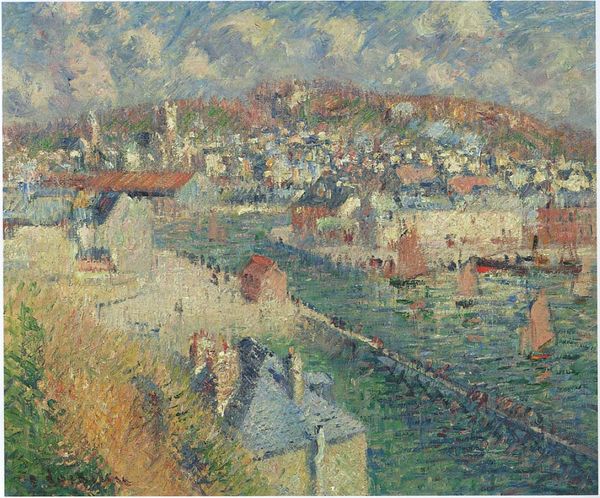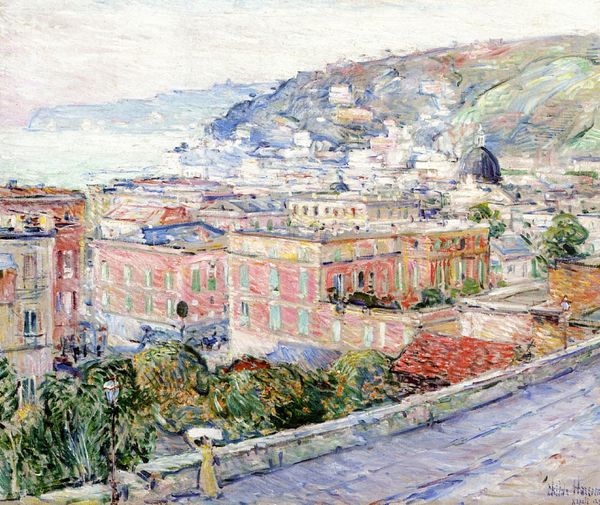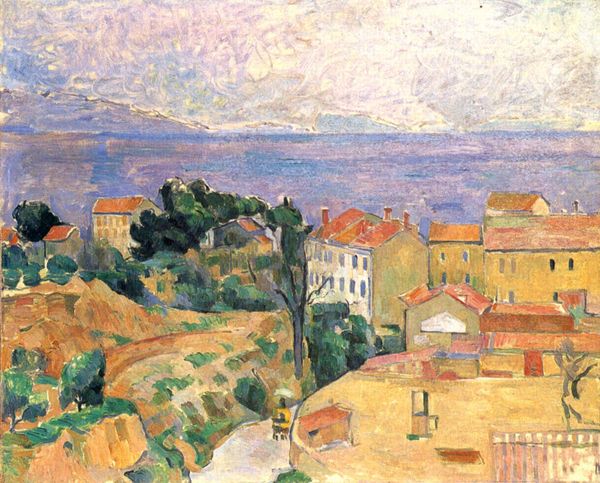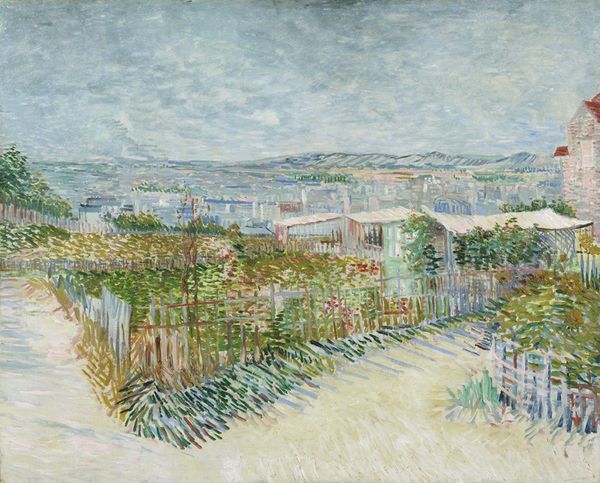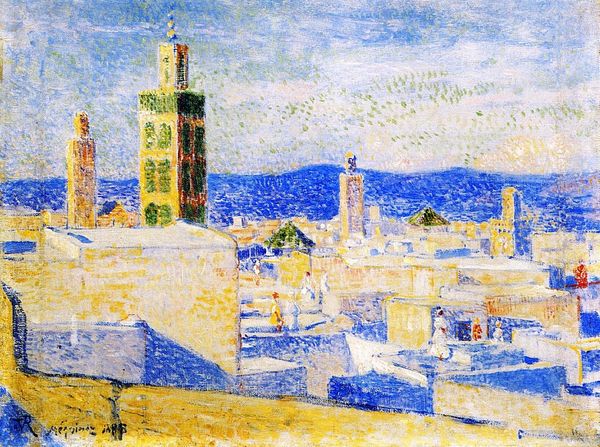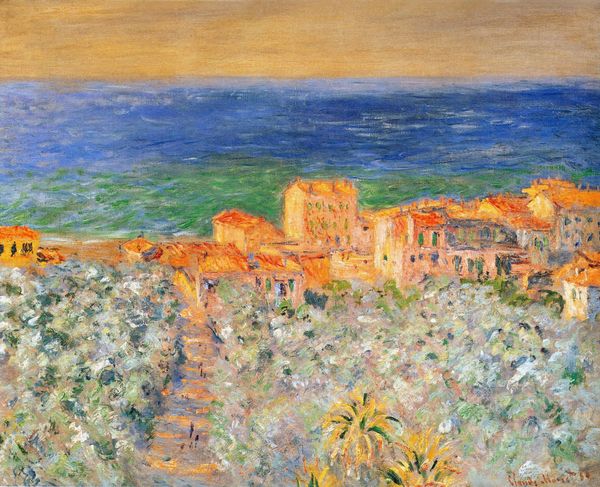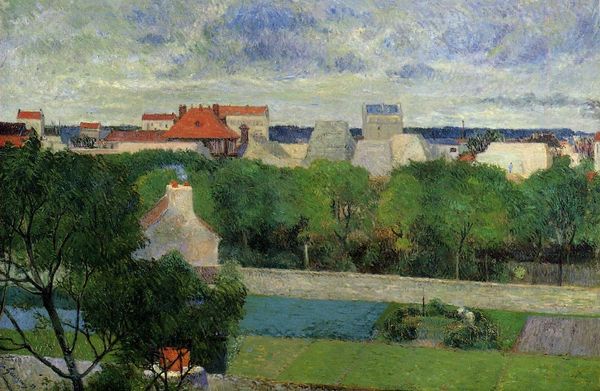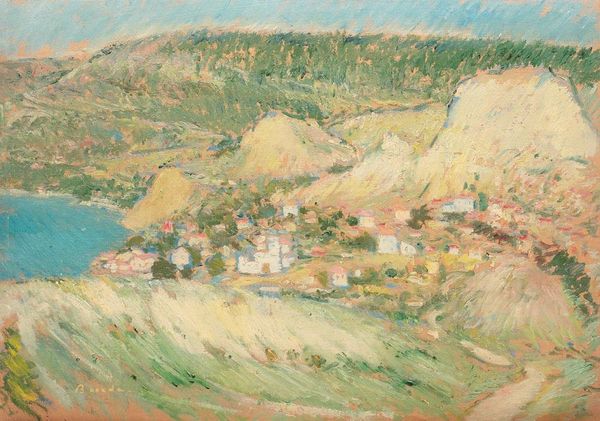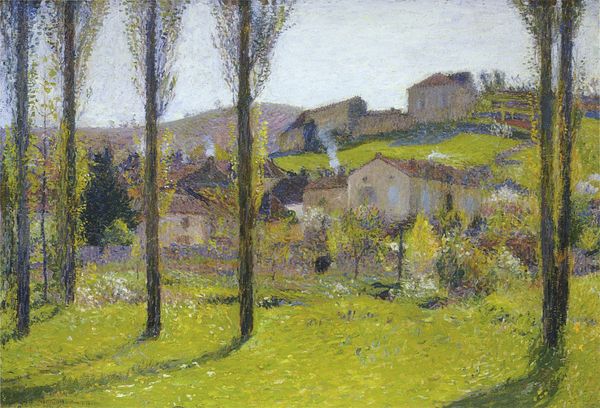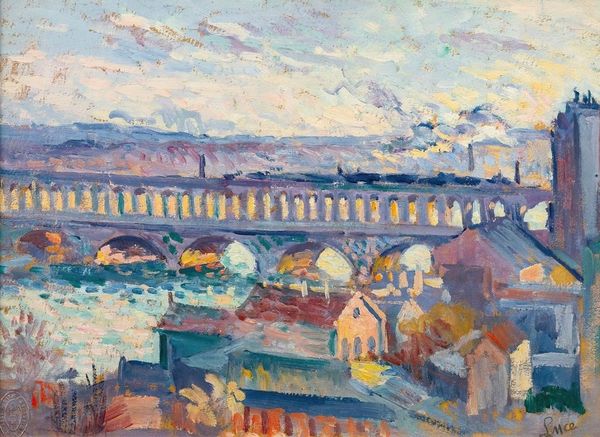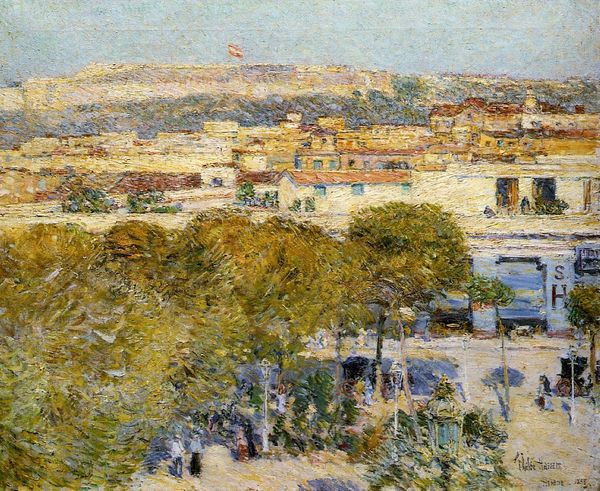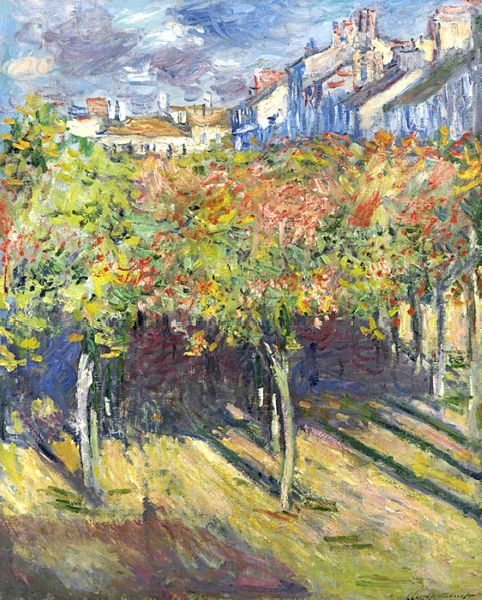
Copyright: Public domain
Editor: Childe Hassam's "Bridge at Posillipo," painted in 1897, is awash with light and color, capturing a vibrant cityscape in oil on canvas. The thick brushstrokes and high vantage point create an immersive experience, but what do you see as the core message of this work? Curator: For me, this painting speaks to the rapid modernization and urbanization of Europe in the late 19th century. Look at the bridge—a symbol of connection and progress—but also consider the implication of viewing the city from above, perhaps indicating the detached perspective of the upper classes. Do you think this separation is also reflected in the color choices? Editor: I hadn’t considered the social implications, but I see what you mean. The soft, almost dreamy hues, while beautiful, seem to distance us from the reality of daily life in the city below. There's definitely a romanticizing lens at play. Curator: Precisely. It invites a reflection on the romanticized views of the elite versus the lived experiences of everyday citizens. It prompts the question: Who is this progress for, and who benefits from it? Are we celebrating innovation, or overlooking inequality? Consider the role of plein-air painting; what does it mean to directly capture a landscape that is changing? Editor: It’s interesting to think about "Bridge at Posillipo" as not just a pretty picture but as a document reflecting social and political tensions. I appreciate how you linked Hassam's impressionistic style with those broader societal currents. Curator: And I appreciate you for thinking about the daily life. It also taught me a new approach, and showed me to see the piece from the humanistic angle, beyond my understanding of socio-economical relations.
Comments
No comments
Be the first to comment and join the conversation on the ultimate creative platform.
